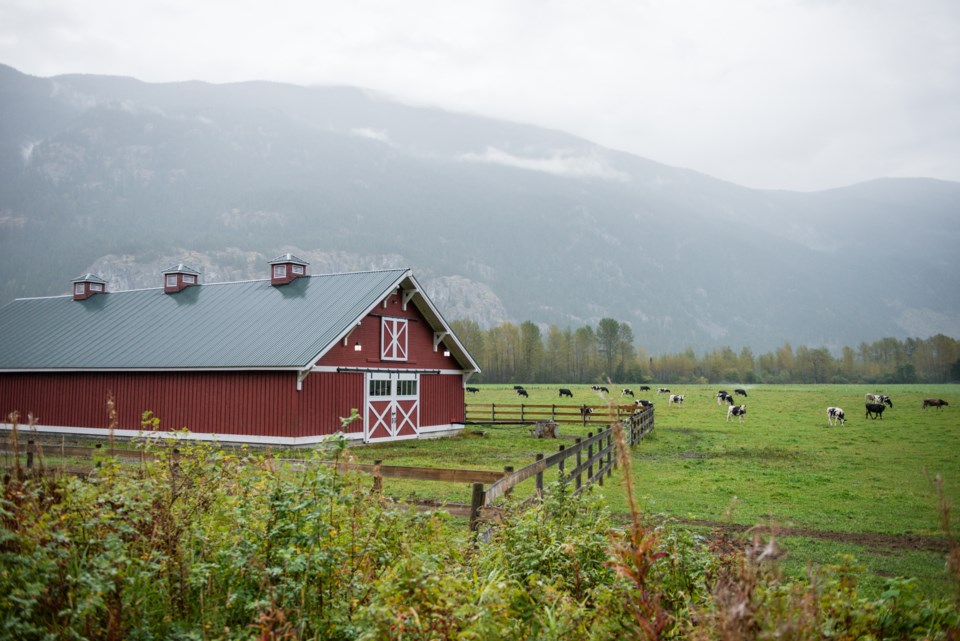We know that eating . Our food system accounts for , with livestock .
Livestock has been blamed for contributing to , , and .
Some of the proposed solutions include switching to more plant-based foods in our diets, which is good, but not perfect, as . Replacing cattle, goats and sheep with chickens and pigs, is also often suggested, but it is a shortsighted approach that .
But an alternative agricultural system could solve this issue. Not only does it address the environmental impacts of livestock, but it also provides farmers with that include creating new jobs, developing new skills, reducing costs and improving their incomes.
As a veterinarian and who has been investigating sustainability transitions in the Mexican livestock sector, I know that this encouraging alternative lies in silvopastoralism.
Making livestock part of the solution
Silvopastoral systems use , and adds livestock to the mix. It involves naturally occurring or cultivated trees, shrubs and grasses that are managed with rotational grazing.
In practice, pastures are divided into smaller paddocks and livestock are moved from one paddock to the next every few days. This way, the grazed paddocks get a rest period that allows vegetation to regrow and distributes manure more evenly to better nourish the soil. Moreover, the animals are not dependent on grasses, and complement their diets with shrubs, tree leaves and fallen fruits.
The simplest and cheapest forms of silvopastoral systems use existing natural forests. Farmers introduce animals to graze in these vast swaths of land where they benefit from shade and abundant forage.
The more management-intensive forms of silvopastoral systems combine high-density cultivation of trees for commercial use, such as fruit or timber, with high-protein shrubs and tropical grasses of higher quality and improved performance. These systems provide higher yields, but also require greater technical knowledge and initial investments to implement.
In between these two, there exists a great that can adapt to a variety of geographies, ecosystems and budgets.
Environmental benefits of this age-old system
and the accumulated research shows encouraging results.
First, planting new trees (and maintaining existing ones) helps . It also by providing habitats for multiple species. Increased biodiversity means there are more birds and insects helping , which benefits the livestock.
Second, it contributes to strengthening animal welfare as trees provide much needed shade and a cooler climate under their canopy, helping . Animals are also able to explore, graze and browse, as their biology motivates them to do.
Not only does rotational grazing allow the land to recover, it also helps boost productivity and animal health .
Higher yields and profits
Studies show that silvopasture practices can improve the productivity of land that is usually managed separately for agriculture or forests by .
Silvopastoral systems have also been when compared to conventional one-crop grazing systems.
The increased availability and higher nutritional value of the forages in these systems — made possible without the need for expensive chemical fertilizers and pesticides — lead to additional savings.
Furthermore, the diversification offered by silvopastoral systems helps in unfavourable market conditions and weather-related events. This can be directly from the sale of timber, fruits, forage, animals or animal products, and indirectly thanks to the beneficial effects of trees, such as increasing water infiltration into the soil to and providing food for the animals during drought seasons.
Grass-based diet
, and it just makes financial sense. Feeding animals grasses, shrubs and crop residues that are inedible to humans is a cheaper and more efficient use of resources.
Let’s not forget that . There’s no need for them to compete for crops that might otherwise be eaten by people, and challenge global food security.
In fact, high rations of grains in cattle’s diets can cause them serious digestive disorders and account for up to . With , an alternative approach to livestock feeding should certainly be a priority.
Scaling-up: Challenges and opportunities
If silvopastoral systems offer a triple-win solution to economic, social and environmental challenges of animal agriculture, why are they not more widely spread?
Agroforestry is probably , but capitalist markets and policies in the never-ending pursuit of higher profits have restructured agriculture towards , at the expense of so-called invisible social and environmental costs.
Science has shown the many benefits of silvopastoral systems. Now, we need more research into the challenges that are limiting their adoption in different local contexts around the world. We need research into policy and market innovations that can encourage the transition. And we also need societal willingness towards a healthy reduction of meat consumption, particularly in wealthier nations.
Progress is underway. We already have .
There is no time like the present to take an active role in the transformation of our food systems and start demanding and supporting sustainable alternatives.
![]()
Vivian's PhD research is funded by a scholarship from the National Council of Science and Technology in Mexico (CONACyT).

